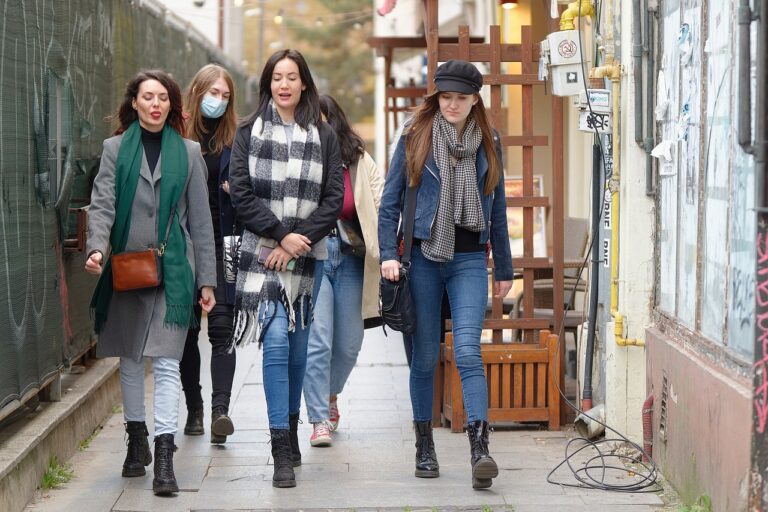Fashion and Heritage: Celebrating Indigenous Textiles and Craftsmanship
Indigenous textiles and craftsmanship have long been cherished for their intricate designs, vibrant colors, and rich cultural significance. From the intricate beadwork of the Maasai tribe in Kenya to the intricate weaving techniques of Navajo artisans in the United States, indigenous textiles are a powerful expression of heritage and identity. In this article, we will explore the importance of celebrating and preserving these traditional art forms in the world of fashion.
The Significance of Indigenous Textiles
Indigenous textiles are not just pieces of fabric they are living artifacts that tell a story of cultural heritage and tradition. Each stitch, pattern, and color choice carries deep meanings that reflect the history, beliefs, and values of a particular community or tribe. By wearing indigenous textiles, individuals can connect with the rich tapestry of human history and celebrate the diversity of global cultures.
Preserving Traditional Craftsmanship
As the world becomes increasingly interconnected, traditional craftsmanship is at risk of being lost or diluted. Globalization and modernization have led to the decline of many indigenous textile traditions, as younger generations are drawn to more mainstream and commercially produced clothing. However, there is a growing movement to preserve and revive these ancient techniques, led by passionate artisans and designers who recognize the value of traditional craftsmanship.
One such example is the work of Mexican fashion designer Carla Fernandez, who collaborates with indigenous communities across Mexico to create contemporary clothing that honors traditional techniques. Through her designs, Fernandez not only showcases the beauty of indigenous textiles but also provides economic opportunities for local artisans, helping to sustain their craft for future generations.
Impact on Sustainable Fashion
Indigenous textiles are not only culturally significant but also environmentally friendly. Many traditional weaving and dyeing techniques are inherently sustainable, using natural materials and processes that have minimal impact on the environment. This eco-friendly approach to fashion stands in stark contrast to the fast fashion industry, which is notorious for its high levels of waste and pollution.
By incorporating indigenous textiles into their collections, fashion designers can promote sustainability and ethical practices within the industry. This shift towards eco-friendly fashion not only benefits the environment but also raises awareness about the importance of preserving traditional craftsmanship and supporting indigenous communities.
Empowering Indigenous Communities
When fashion designers collaborate with indigenous artisans, they not only showcase their talent and creativity but also provide economic opportunities and empowerment. By creating partnerships based on mutual respect and understanding, designers can help indigenous communities preserve their cultural heritage while also generating income and recognition for their craft.
One inspiring example of this collaboration is the brand Aaks, which works with female artisans in Ghana to create vibrant handwoven bags using traditional techniques. By supporting these artisans, Aaks is not only creating beautiful and unique products but also contributing to the economic empowerment of women in rural communities.
Celebrating Diversity and Inclusivity
Indigenous textiles have the power to celebrate diversity and promote inclusivity in the fashion industry. By incorporating these traditional art forms into their collections, designers can amplify the voices and stories of marginalized communities, challenging stereotypes and promoting a more inclusive and representative vision of beauty and style.
Through their designs, indigenous artisans and designers can reclaim their cultural heritage and challenge colonial narratives that have long marginalized their voices. By embracing indigenous textiles, the fashion industry can move towards a more inclusive and equitable future that celebrates the rich tapestry of human experience.
FAQs
Q: How can consumers support indigenous artisans and designers?
A: Consumers can support indigenous artisans and designers by purchasing products that showcase traditional craftsmanship, attending cultural events and exhibitions, and educating themselves about the history and significance of indigenous textiles.
Q: What are some examples of indigenous textiles from around the world?
A: Some examples of indigenous textiles include the handwoven textiles of the Andean communities in Peru, the intricate batik fabrics of Indonesia, and the beaded garments of the Maasai tribe in Kenya.
Q: How can fashion designers work ethically with indigenous communities?
A: Fashion designers can work ethically with indigenous communities by establishing respectful partnerships, providing fair wages and working conditions, and ensuring that their designs are created in collaboration with, rather than exploitation of, indigenous artisans.
Q: Why is it important to celebrate and preserve indigenous textiles?
A: Celebrating and preserving indigenous textiles is important because it honors the cultural heritage and traditions of marginalized communities, promotes sustainability and ethical practices in the fashion industry, and challenges colonial narratives that have long oppressed indigenous voices.







